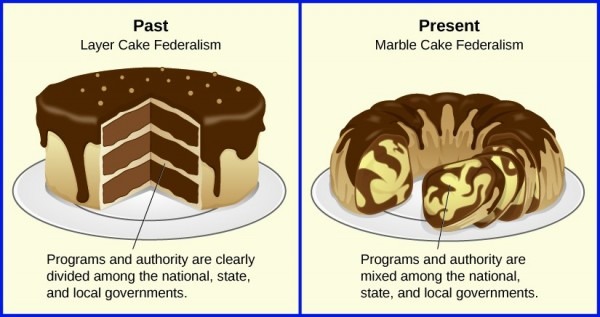As America approaches her 245th birthday, let’s take a few moments to review one of the most important and innovative concepts of her government: federalism.
Wait…Federalism?
Yes, federalism. If you find yourself dusting off the memories you left back in AP History class, you’re not alone. The discussion of federalism isn’t nearly as fun as running through the Bill of Rights nor as flashy as the Declaration of Independence, and many people forget about this important piece of our design.
Federalism is a foundational concept of our government, and understanding it is important for citizens and representatives alike.
So, let’s get to it.
What is Federalism?
Federalism is the constitutional division of power between the states and the national-level of government. Basically, it outlines how government power is divided and which level of government is responsible for what.
It is important to note that though we refer to our national-level of government as the “federal government,” federal and federalism are not the same thing.
In fact, federalism was used by our Founders to limit and control the growth of the federal government, helping to ensure liberty for the people.
Why the Framers Wanted Federalism
The implementation of a national level of government was hotly contested during the design of our country. The Founders needed to work together to create a united country while also preserving freedom of the states and protecting against tyranny.
In the end, they used federalism as a structure to help ensure both.
Where Federalism is Found
The Commerce Clause (Article I, section 8) gives Congress the authority “to regulate commerce with foreign Nations, and among the several States, and with Indian Tribes.” This was used to establish the role of the federal government.
The 10th Amendment, however, puts the brakes on the federal government: “The powers not delegated to the United States by the Constitution, nor prohibited by it to the States, are reserved to the States respectively, or to the people.”
The Division of Power Between the National and State Governments
The division of power between the two levels of government has changed drastically in the last 80 or so years. From 1788 until the mid-1930s, America operated under a design of dual federalism.
Often referred to as “layer cake” federalism (for the clear and distinct differences between layers of government), dual federalism had strict separation in the roles of government.
Under this form of federalism, the national government was limited to regulating money and certain activities related to commerce, maintaining armed forces and declaring war, international relations and tariffs, and establishing a post office.
Everything else fell to the individual states. During this time the reach of the federal government was quite limited, and state rights were highly protected.

What Happened in the 1930s
The New Deal introduced the concept of cooperative federalism where the national government encourages states to “pursue nationally-defined goals.” Under cooperative federalism, the national government started influencing laws at the state level by attaching regulations and requirements to money in the form of categorical grants.
Through grants and aides, the national government uses a “carrot and stick” approach where it either entices states to adhere to policies and laws by promising money or coerces change by threatening to remove or withhold money.
This type of federalism is referred to as “marble cake” federalism because the roles between the forms of government are mixed together and difficult to discern.
New Federalism
Presidents Nixon and Reagan pushed forward a concept of new federalism that sought to return some rights back to the states through use of the 10th Amendment.
New federalism brought forth block grants (where the states get federal money for a project and determine how best to use it themselves), and devolution (a transfer of power back to the states). Presidents H.W. Bush and Clinton practiced new federalism, whereas W. Bush and Obama did not.
What Cake are We Eating?
Our current form of federalism can be best described as cooperative federalism with areas of high regulation. Though federal monies are released through both categorical and block grants, Congress will often use coercive regulatory practice to entice states to enact laws pushed at the national level.
In conclusion, the federal government takes roughly three trillion dollars in taxes each year, nearly half of which comes from the 56% of individuals who pay federal tax. This money is used to not only sustain our massive federal government, but to also coerce states into giving into regulatory practice that grows our government further and ultimately removes the rights of the people.
By understanding federalism and the desire the Founders had to limit the growth of government, preserve liberty, and protect against tyranny, we can use the provisions outlined in our Constitution to return to a clear and honest division of power, respecting the sovereignty of the states.






